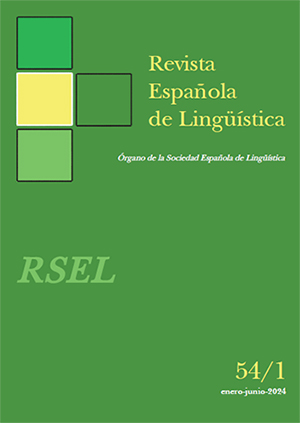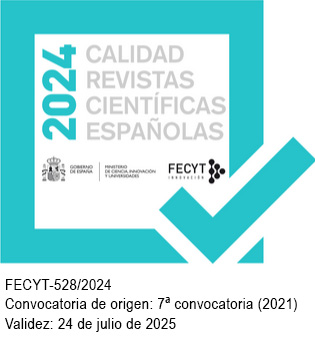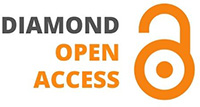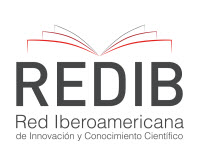De la variación tipológica a la variación intralingüística (y viceversa): el caso de los familectos
doi: https://doi.org/10.31810/rsel.54.1.1
Palabras clave:
Tipología sociolingüística; lenguas exotéricas; lenguas esotéricas; familectos; complejidadResumen
Los estudios de tipología sociolingüística sugieren que diversos factores sociopolíticos podrían explicar parte de los rasgos estructurales de las lenguas y, en particular, en qué dominios resultan más complejas o más simples. Así, las lenguas habladas por sociedades cerradas (denominadas esotéricas) presentan una fonología y una morfología más compleja y una menor transparencia semántica, mientras que las usadas por sociedades abiertas (o exotéricas) manifiestan una mayor complejidad sintáctica y un mayor grado de composicionalidad semántica. En este artículo se defiende la utilidad de considerar este tipo de trabajos para una mejor comprensión de la variación intralingüística, el objeto principal de interés de la sociolingüística (sobre todo, la variacionista). En concreto, se propone extender el ámbito de aplicación de los conceptos esotérico y exotérico al estudio de la variación social del español. Para ilustrar un programa de análisis de este tipo se discute el caso de los familectos, esto es, las variedades de la lengua asociadas a las unidades familiares. Se propone un protocolo de análisis de estas variedades, que incluye una lista de rasgos estructurales de interés definidos a partir de la hipótesis de que los familectos pueden describirse e interpretarse satisfactoriamente en términos de usos esotéricos de la lengua estándar, con características distintivas que los diferencian hasta cierto punto de otras variedades del vernáculo, en particular, del español oral informal.
Descargas
Citas
Beaumont, S. L. (1995). Adolescent girls’ conversations with mothers and friends: A matter of style. Discourse Processes, 20(1), 109-132.
doi: https://doi.org/10.1080/01638539509544933
Benítez-Burraco, A., y Kempe, V. (2018). The emergence of modern languages: Has human self-domestication optimized language transmission? Frontiers in Psychology, 9, Article 551. doi: https://doi.org/10.3389/fpsyg.2018.00551
Benítez-Burraco, A., y Progovac, L. (2020). A four-stage model for language evolution under the effects of human self-domestication. Language & Communication, 73, 1–17. doi: https://doi.org/10.1016/j.langcom.2020.03.002
Bolender, J. (2007). Prehistoric cognition by description: a Russellian approach to the upper Paleolithic. Biology & Philosophy, 22, 383–399.
doi: https://doi.org/10.1007/s10539-006-9058-2
Burrell, N. A. (1995). Communication patterns in stepfamilies: Redefining family roles, themes, and conflict styles. En M. Fitzpatrick y A. Vangelisti (Eds.). Explaining family interactions (pp. 290-309). Thousand Oaks, CA: Sage.
Conti Jiménez, C. (2018). Complejidad lingüística: Orígenes y Revisión Crítica del Concepto de Lengua Compleja. Berna: Peter Lang.
Chen, S., Gil, D., Gaponov, S., Reifegerste, J., Yuditha, T., Tatarinova, T. V., Progovac, L., y Benítez-Burraco, A. (2023, May 17). Linguistic and memory correlates of societal variation: A quantitative analysis. doi: https://doi.org/10.31234/osf.io/bnz2s
Chen, S., Gil, D., Gaponov, S., Reifegerste, J., Yuditha, T., Tatarinova, T. V., Progovac, L., y Benítez-Burraco, A. (2024). Linguistic correlates of societal variation: A quantitative analysis. PLoS ONE, 19(4). doi: https://doi.org/10.1371/journal.pone.0300838
Clancy, B. (2016). Investigating intimate discourse. Exploring the spoken interaction of families, couples and friends. Londres: Routledge.
Dahl, Ö. (2015, Mayo 1-3). How WEIRD are WALS languages? [Conference presentation abstract]. Diversity Linguistics – Retrospects and Prospects, Leipzig.
Díaz-Campos, M. (Ed.). (2011). The Handbook of Hispanic Sociolinguistics. Malden, MA: John Wiley & Sons.
Díaz-Campos, M., Escalona Torres, J. M., y Filimonova, V. (2020). Sociolinguistics of the Spanish-Speaking World. Annual Review of Linguistics, 6(1), 363-388.
doi: http://dx.doi.org/10.1146/annurev-linguistics-011619-030547
Dryer, M. S., y Haspelmath, M. (Eds.). (2013). The World Atlas of Language Structures Online. Leipzig: Max Planck Institute for Evolutionary Anthropology.
Eberhard, D. M., Simons, G. F., y Fennig, C. D. (Eds.). (2022). Ethnologue: Languages of the World (twenty-fifth edition). Dallas, Texas: SIL International. Online version: http://www.ethnologue.com
Ehret, K., Berdicevskis, A., Bentz, C., y Blumenthal-Dramé, A. (2023). Measuring language complexity: challenges and opportunities. Linguistics Vanguard, 9(1), 1-8.
doi: https://doi.org/10.1515/lingvan-2022-0133
Everett, D. (2005). Cultural constraints on grammar and cognition in Pirahã: Another look at the design features of human language. Current Anthropology, 46(4), 621–646.
Fletcher, P., y MacWhinney, B. (Eds.). (1995). The Handbook of Child Language. Oxford: Blackwell.
Foulkes, P., Docherty, G. J., y Watt, D. (2005). Phonological variation in child-directed speech. Language, 81(1), 177-206. http://www.jstor.org/stable/4489857
Gil D. (2021). Tense-aspect-mood marking, language-family size and the evolution of predication. Philosophical Transactions of the Royal Society B 376, 20200194. doi: http://doi.org/10.1098/rstb.2020.0194
Gordon, C. (2009). Making meanings, creating family: Intertextuality and framing in family interaction. Nueva York: Oxford University Press.
Halliday, M. A. K. (1976). Anti‐languages. American Anthropologist, 78(3), 570-584. http://www.jstor.org/stable/674418
Hammarström, H., Forkel, R., Haspelmath, M., y Bank, S. (2022). Glottolog 4.6. Leipzig: Max Planck Institute for Evolutionary Anthropology.
doi: https://doi.org/10.5281/zenodo.6578297 (Available online at http://glottolog.org).
Hazen, K. (2004). The Family. En K. Chambers, P. Trudgill, y N. Schilling-Estes (Eds.). The Handbook of Language Variation and Change (pp. 500-525). Malden, MA.: Blackwell. doi: https://doi.org/10.1002/9780470756591.ch20
Henrich, J., Heine, S. J., y Norenzayan, A. (2010). The weirdest people in the world? Behavioral and Brain Sciences, 33(2–3), 61–83.
doi: https://doi.org/10.1017/S0140525X0999152X
Joseph, J. E. (2021). Why does language complexity resist measurement? Frontiers in Communication, 6, 624855. doi: https://doi.org/10.3389/fcomm.2021.624855
Kempe, V., Brooks, P. J., Gillis, S., y Samson, G. (2007). Diminutives facilitate word segmentation in natural speech: cross-linguistic evidence. Memory & Cognition, 35(4), 762–773. doi: https://doi.org/10.3758/bf03193313
Kirby, K. R., Gray, R. D., Greenhill, S. J., Jordan, F. M., Gomes-Ng, S., Bibiko, H. J., et al. (2016). D-PLACE: A global database of cultural, linguistic and environmental diversity. PloS One, 11(7), e0158391. doi: https://doi.org/10.1371/journal.pone.0158391
Lupyan, G., y Dale, R. (2010). Language structure is partly determined by social structure. PLoS One 5(1): e8559. doi: https://doi.org/10.1371/journal.pone.0008559
Lust, B. C. (2006). Child Language: Acquisition and Growth. Cambridge: Cambridge University Press.
Majid, A. (2023). Establishing psychological universals. Nature Reviews Psychology, 2, 199–200. doi: https://doi.org/10.1038/s44159-023-00169-w
Miestamo, M. (2017). Linguistic diversity and complexity. Lingue e Linguaggio, 16(2), 227-253. doi: https://doi.org/10.1418/88241
Osovska, I. M. (2019). Lexical-semantic space of the German family discourse. En V. D. Bialyk, L. I. Didukh, M. Yu. Ivanchenko, et al. (Eds.). Efficiency level and the necessity of influence of philological sciences on the development of language and literature: collective monograph (pp. 123-144). LvivToruń: Liha-Pres.
doi: https://doi.org/10.36059/978-966-397-170-4/123-144
Roberts, J. (2013). Child language variation. En J. K. Chambers y N. Schilling (Eds.). The Handbook of Language Variation and Change (pp. 263-276). Oxford: Wiley-Blackwel. doi: https://doi.org/10.1002/9781118335598.ch12
Saint-Georges, C., Chetouani, M., Cassel, R., Apicella, F., Mahdhaoui, A., Muratori, F., Laznik, M. C., y Cohen, D. (2013). Motherese in interaction: at the cross-road of emotion and cognition? (A systematic review). PloS One, 8(10), e78103.
doi: https://doi.org/10.1371/journal.pone.0078103
Schick, J., Fryns, C., Wegdell, F., Laporte, M., Zuberbühler, K., van Schaik, C. P., et al. (2022). The function and evolution of child-directed communication. PLoS Biology, 20(5), e3001630. doi: https://doi.org/10.1371/journal.pbio.3001630
Silva-Corvalán, C. (2001). Sociolingüística y pragmática del español. Washington, D.C.: Georgetown University Press.
Skirgård, H., Haynie, H. J., Blasi, D. E., Hammarström, H., Collins, J., Latarche, J. J., et al. (2023). Grambank reveals the importance of genealogical constraints on linguistic diversity and highlights the impact of language loss. Science Advances, 9(16), eadg6175. doi: https://doi.org/10.1126/sciadv.adg6175
Søndegaard, B. (1991). Switching between seven codes within one family—a linguistic resource. Journal of Multilingual and Multicultural Development, 12(1-2), 85-92. doi: https://doi.org/10.1080/01434632.1991.9994448
Storch, A. (2017). Typology of secret languages and linguistic taboos. En A. Y. Aikhenvald y R. M. W. Dixon (Eds.). The Cambridge Handbook of Linguistic Typology (pp. 287-322.). Cambridge: Cambridge University Press.
doi: https://10.1017/9781316135716.010
Szmrecsanyi, B. (2015). Recontextualizing language complexity. En J. Daems, E. Zenner, K. Heylen, D. Speelman, y H. Cuyckens (Eds.) Change of paradigms - new paradoxes: Recontextualizing language and linguistics (pp. 347-360). Berlín: De Gruyter Mouton. doi: https://doi.org/10.1515/9783110435597-020
Thurston, W. R. (1987). Processes of change in the languages of north-western New Britain. Canberra: Dept. of Linguistics, Research School of Pacific Studies, The Australian National University.
Thurston, W. R. (1994). Renovation and innovation in the languages of north-western New Britain. En T. Dutton y D. T. Tryon (Eds.). Language Contact and Change in the Austronesian World (pp. 573–609). Berlín: Mouton de Gruyter.
Varenne, H. (1987). Talk and real talk: the voices of silence and the voices of power in American family life. Cultural Anthropology, 2(3), 369-394.
Wray, A., y Grace, G. W. (2007). The consequences of talking to strangers: Evolutionary corollaries of socio-cultural influences on linguistic form. Lingua, 117, 543-578. doi: https://doi.org/10.1016/j.lingua.2005.05.005
Publicado
Cómo citar
Número
Sección
Derechos de autor 2024 Revista Española de Lingüística

Esta obra está bajo una licencia internacional Creative Commons Atribución-NoComercial-SinDerivadas 4.0.











